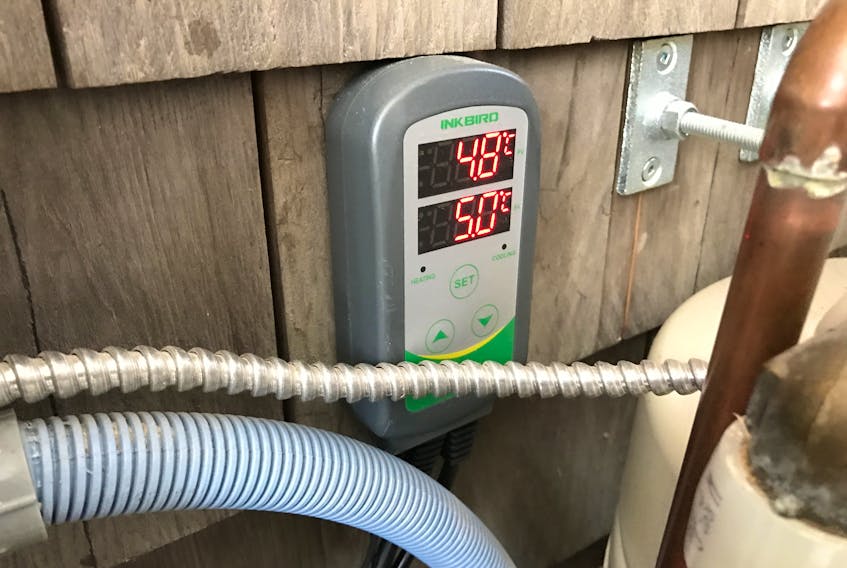Adjusting a water line thermostat
Question: How should I configure the thermostat that controls an electric heating cable that keeps a shallow water line from freezing at my place? I installed the line this past fall to service an outbuilding that sits 12 inches above ground on piers. The three-quarter-inch diameter water pipe sits inside a three-inch diameter protective outer pipe, with the heating cable running inside.
Answer: The thermostat you’ve got is like many designs used for this purpose. A temperature probe on the end of a wire feeds information to the thermostat that turns power to the heating cable ON or OFF as needed. I’ve installed several of these systems over the years, and it’s important to locate the temperature probe in the coldest part of the system. This would be where the water pipe and outer protective pipe turn upwards to enter your raised building. I’d set the thermostat to come on at 5ºC and switch off again at 8ºC or 9ºC. You could adjust things closer to the freezing point, but it’s good to have a little extra heat, just in case.
Making shelter under a deck
Question: What’s the best way to create rain-proof shelter under the floor of a second storey deck? I want to use the space for barbecuing and entertaining.
Answer: Raised decks can offer excellent shelter if the floor above is made so it can shed rain and melting snow. Factory finished metal roofing installed on the underside of the second-floor deck joists does a great job with this. To create the necessary outward slope on the steel you’ll need to cut tapered wooden strips to go on the underside of the floor joists, sloping outwards. Fasten the roofing metal to the underside of these tapered strips using roofing screws, and the water will run down and out past the deck area. You can get roofing metal cut to any length you want. Building supply outlets can bring in whatever you specify, so you can get a nice fit underneath your deck with no need for cutting.

Keeping a rural driveway clear
Question: What’s the best way to clear snow from my rural driveway? I’m a newly-single woman with a 16-year-old son living on an old farm. My driveway is 800 meters long and last year we paid $500 to have someone keep the snow clear. I’d like to save money and equip my son and I to do the work ourselves. Would a walk-behind snow blower be practical?
Answer: Even a really big walk-behind blower could easily require four or five hours for a single clearing of a driveway as long as yours. Then there’s the expense of buying and maintaining your own equipment. Professional-grade walk-behind blowers list at more than $8K. The smaller 11 hp, 32-inch Honda blower I use at my place currently costs more than $4k and it would not be able to handle your driveway in a reasonable time. Another approach is to buy an old tractor with a snowblower. My 40-year-old, 60 horsepower tractor cost the same as my Honda snowblower, but it clears an eight-foot wide swath in a single pass. Something like this could easily clear your driveway in less than 30 minutes. The challenge with old equipment is the need for tinkering and repairs. That $500 your neighbour charged to clear your driveway might seem high, but it’s quite reasonable when you consider the cost and maintenance of running your own equipment. Go ahead and buy some equipment, but know that it probably won’t save you much money. It certainly won’t save you money when you count the time it will take you or your son to keep the driveway clear all winter.

Visit STEVE MAXWELL online at BaileyLineRoad.com for free access to hundreds of Canadian home improvement articles and videos.
MORE STEVE MAXWELL:









